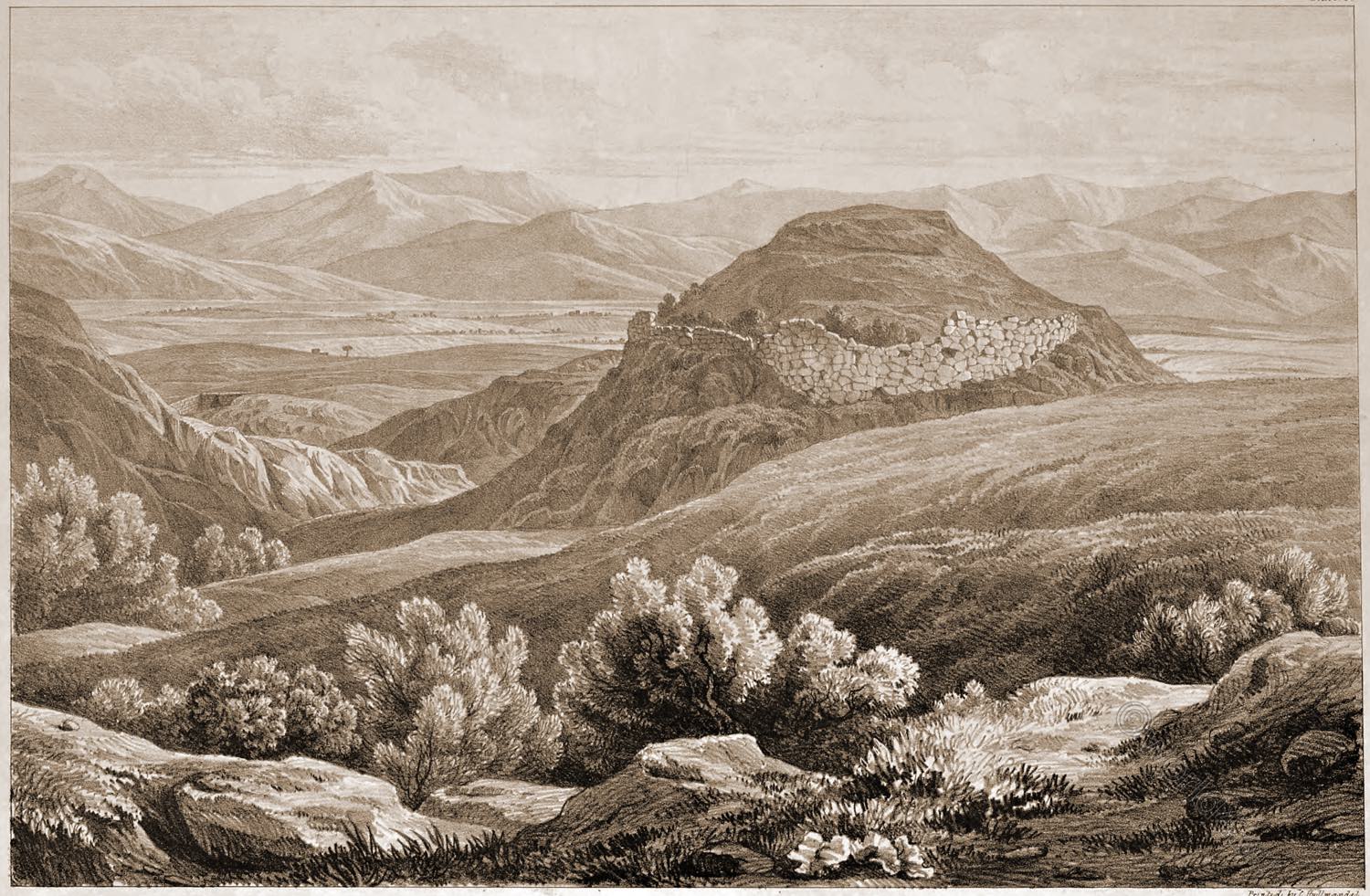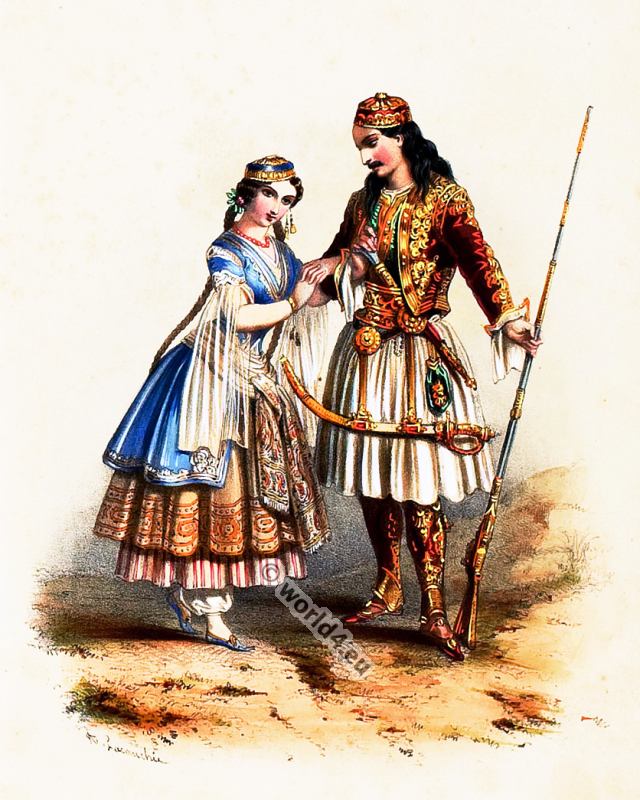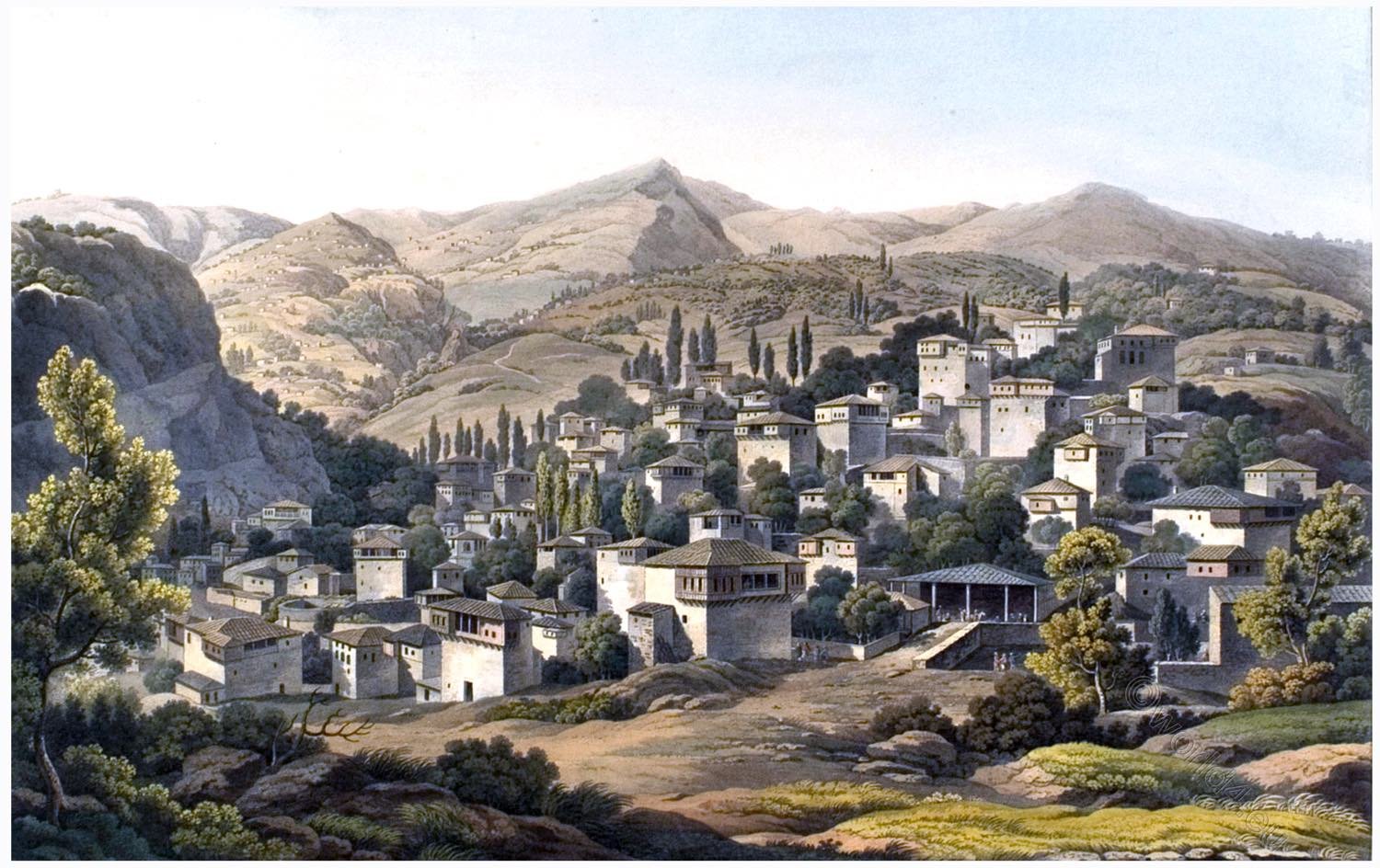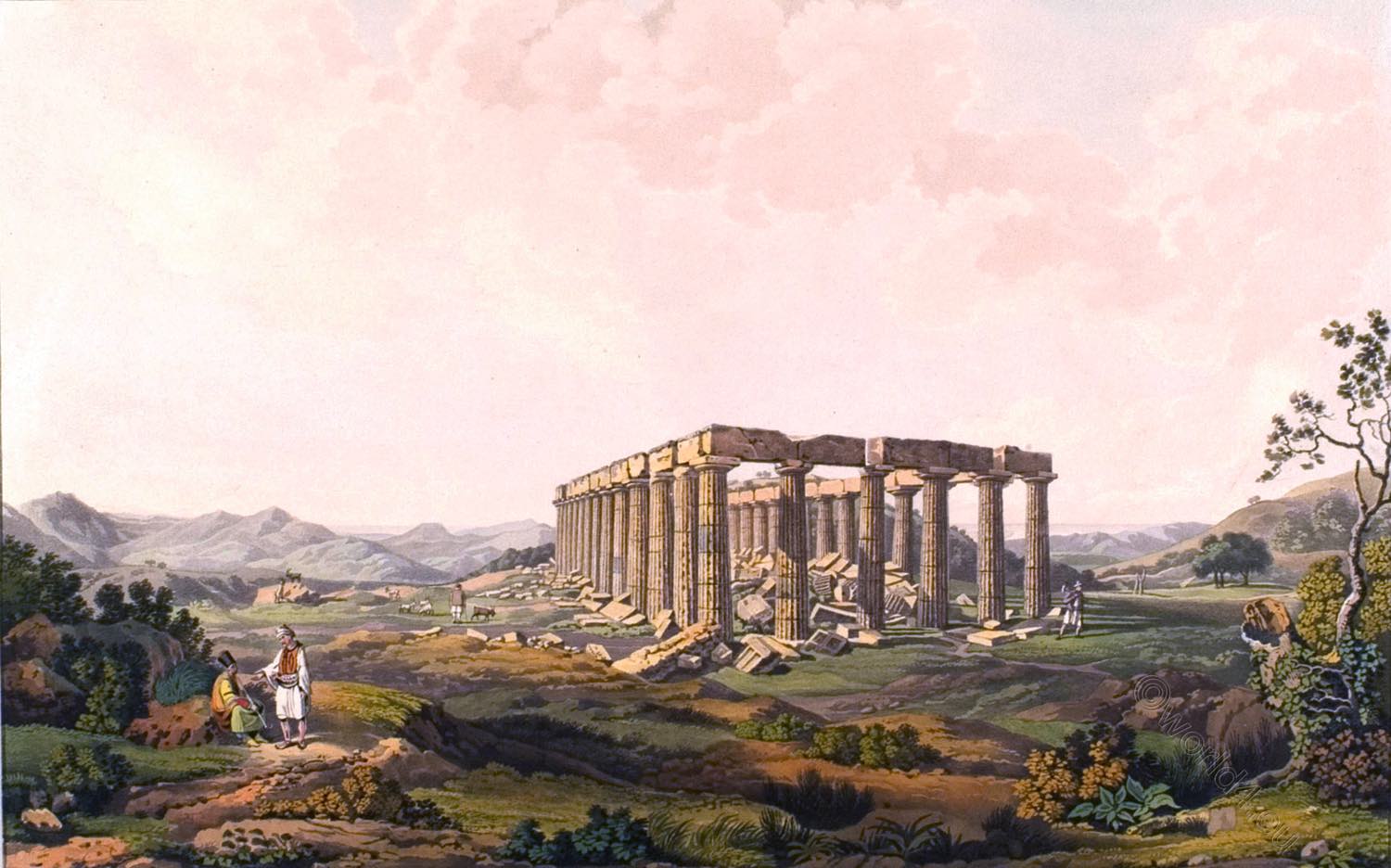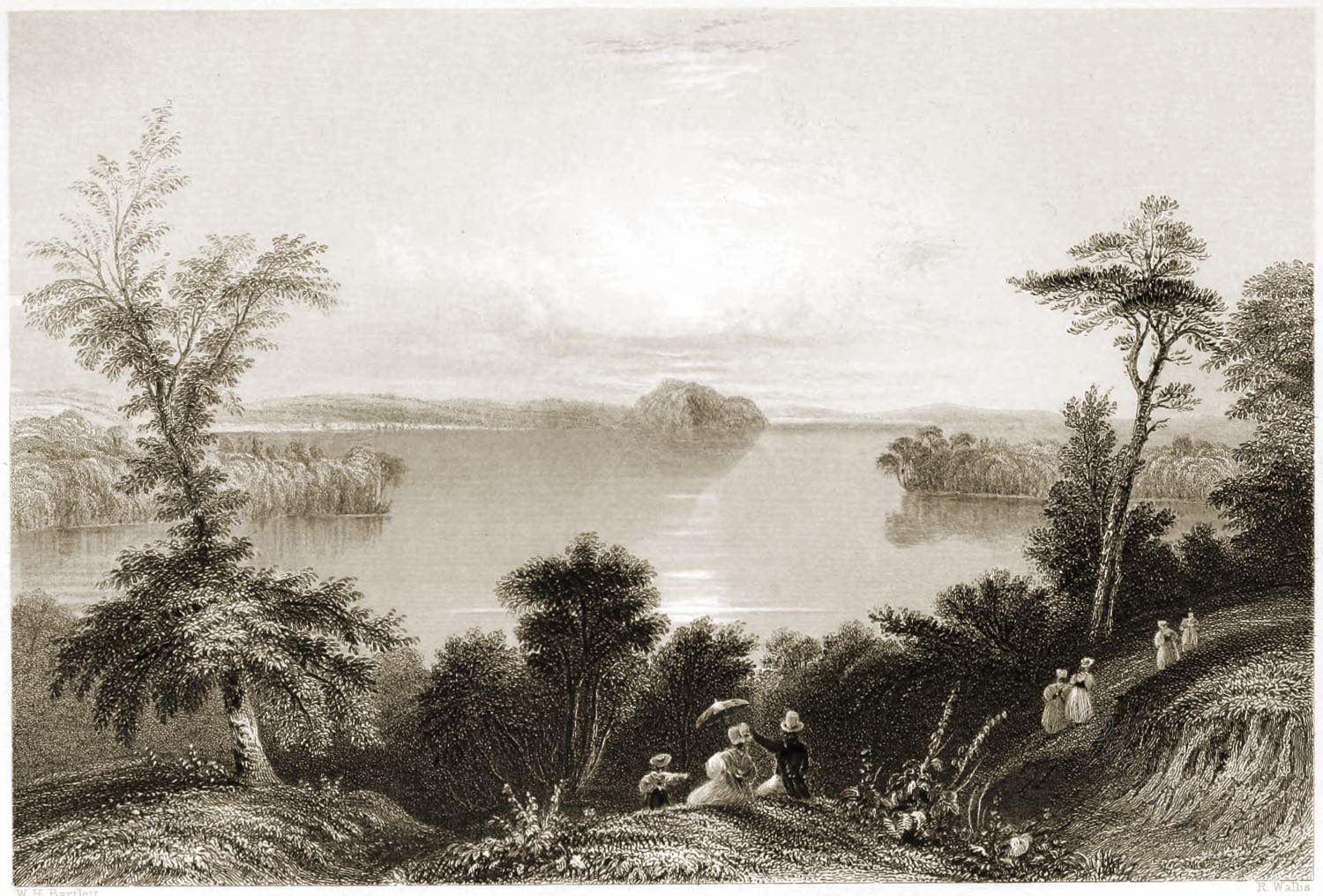According to legend, Stymphalos was only settleable after Heracles killed the crane-sized Stymphalian birds with his bow and arrow because they hacked people to death with their hard beaks. The saga obviously has a connection to the local reality of Stymfalia at that time and today: the unpredictable lake makes it difficult to secure a livelihood through field cultivation.
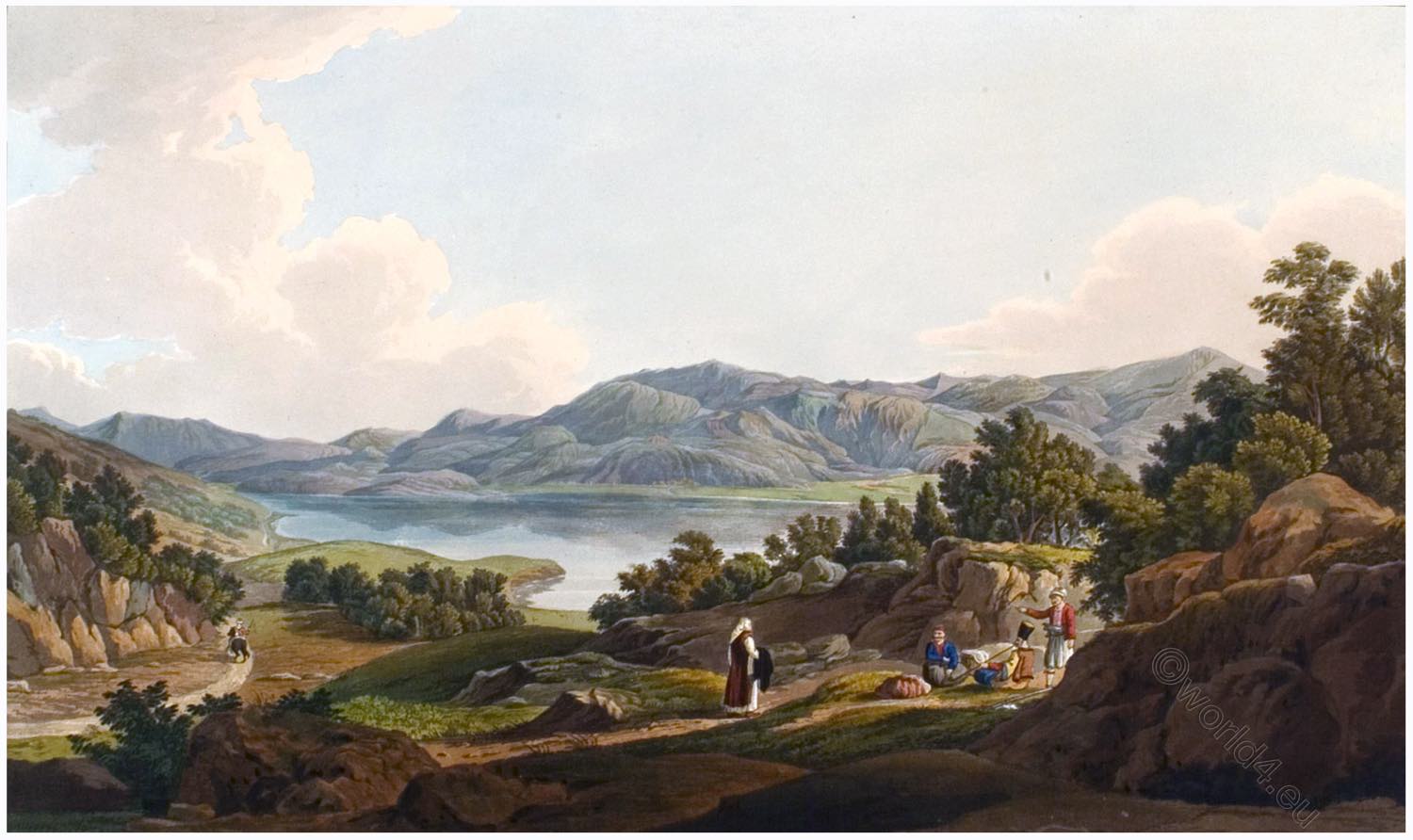
LAKE OF STYMPHALOS IN ARCADIA
by Edward Dodwell.
THE city of Stymphalos was supposed to have been founded by a son of Elatos, who was son of Arkas. 1) It is mentioned by Homer 2) amongst those cities which supplied forces for the Trojan war. It was one of the largest towns in Arcadia, and some vestiges of its ancient strength may still be seen on the north-east side of the Lake Stymphalis.
The lake is of small dimensions, and is still less considerable in the summer season, although it is never dry, winch, as it would appear from Pausanias, 3) was sometimes the case. It is supplied by two perennial streams, the most considerable of which is the Fount of Stymphalos that rises near the lake at the foot of Mount Cyllene.
After having traversed the lake it falls into a katabathron, or chasm, from whence finding its way in a subterraneous channel, it reappears near Argos, where it forms the source of the river Erasinos, which enters the Argolic Gulf near the Lernaean marsh. This physical curiosity is noticed by several ancient authors, particularly by Herodotus, 4) Diodorus Siculus, 5) Strabo, 6) and Pausanias. 7) The subterranean course of the Stymphalos was supposed to be two hundred stadia.
Iphikrates, the Athenian, endeavoured to obstruct the chasm by which the lake discharged its superfluous waters, in order to inundate the Stymphalian territory; but his attempts were said to have been frustrated by divine interposition. 8)
One of the most difficult labours of Hercules was performed at this lake. The extirpation of the Stymphalides must have been total; and the lake at present abounds only with wild ducks and other common water fowl.
1) Pausan. b. 8. c. 4 2) Iliad. 2. v. 608. 3) B. 8. c. 22. 4) B. 6. c. 7G. 5) B. 15. c 49. 6) B. 6 p. 275. 7) B. 8 c 22. 8) Strabo. loc. cit.
Source: Views in Greece. Drawings by Edward Dodwell. Rod Well and Martin, London, 1821.
Discover more from World4 Costume Culture History
Subscribe to get the latest posts sent to your email.

